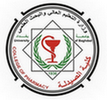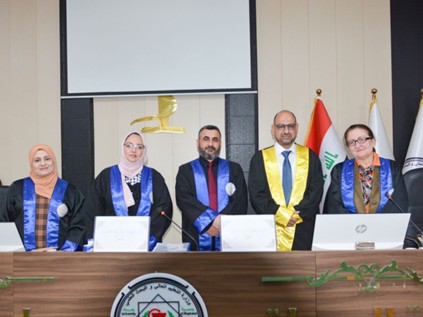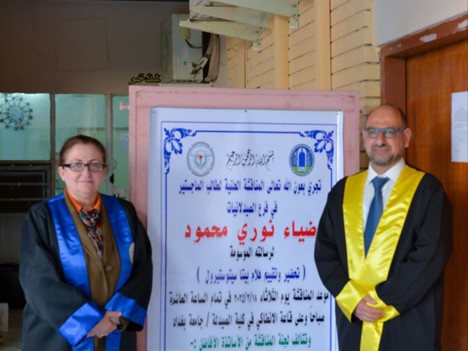The College of Pharmacy discussed the MSc thesis entitled “Preparation, in vitro and ex vivo Evaluation of β-sitosterol Oral Bigel” by the student Dhiaa Noori Mahmood and the supervisor, Assistant Professor Dr. Hanan Jalal Kassab, at the Pharmaceutics Department.The study aimed to formulate and evaluate an innovative oral bigel system for the delivery of beta-sitosterol, specifically targeting infections and inflammation within the oral cavity. This work seeks to overcome the limitations of currently available beta-sitosterol ointments by developing a formulation that demonstrates improved stability and increased patient acceptability, ultimately leading to greater therapeutic efficiency. The study included preparation of 36 oleogel formulations incorporating beta-sitosterol with various gelling agents: sorbitan monostearate (Span 60), stearic acid, olive oil, soybean oil, oleic acid, glycerol, and polysorbate 20 (Tween 20), as well as 12 hydrogel formulations were prepared using hydroxypropylmethylcellulose (HPMC) or methylcellulose (MC) in distilled water. Based on preliminary performance assessments, two oleogel formulations (F5 and F7) and two hydrogel formulations (H6 and H11) demonstrating optimal characteristics were selected for combination, yielding four bigel formulations (B1, B2, B3, and B4). All formulations, including the oleogels, hydrogels, and bigels, were characterized for a range of parameters, including gel-to-sol/sol-to-gel transition, spreading ability, oil binding capacity (OBC%), pH, visual appearance, drug content, in vitro release studies, viscosity, mucoadhesive force, FESEM, FTIR, texture analysis, antimicrobial activity, differential scanning calorimetry (DSC), X-ray diffraction (XRD), and stability tests. The study concluded that the four bigel formulations were successfully characterized based on gel-to-sol and sol-to-gel transitions, spreadability, OBC%, pH, visual appearance, drug content, and in vitro release profile. Among these, formulations B1 (F5+H6) and B2 (F7+H6) demonstrated the most favorable performance across key parameters. Formulation B1 exhibited a gelling temperature of 34.71±0.84°C, a spreadability of 7.04±0.17 cm, a drug content of 99.9±0.04%, and a viscosity ranging from 40,000 to 5,000 mPa•s. It achieved complete drug release (100%) within approximately 90 minutes during in vitro release studies. Similarly, formulation B2 displayed a gelling temperature of 34.98±0.85°C, spreadability of 7.021±0.01 cm, drug content of 99.97±0.03%, and viscosity ranging from 45,000 to 5,000 mPa•s, with complete drug release (100%) achieved within approximately 120 minutes during in vitro release studies. Further comprehensive analyses, including mucoadhesive force measurements, field emission scanning electron microscopy (FESEM), Fourier-transform infrared spectroscopy (FTIR), texture profile analysis, antimicrobial activity assessment, differential scanning calorimetry (DSC), x-ray diffraction (XRD), and stability tests, confirmed that B1 and B2 possessed ideal structural, mechanical, and functional characteristics. Both bigels demonstrated patient-friendly properties and were superior to β-sitosterol ointments currently available on the market. The study recommended conducting clinical trials to establish the efficacy and safety of the newly designed β-sitosterol bigel formulations for specific oral diseases in human subjects and building upon the positive preclinical investigations.



